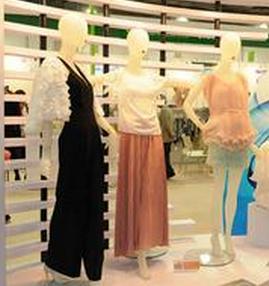Although society and society generally believe that the textile and clothing industry as a labor-intensive industry has excess capacity, it is a “sunset industryâ€. However, we believe that the so-called "food, clothing, housing and transportation" will never become a sunset industry. According to the statistics of China Customs, in 2013, China's textile and clothing trade exports amounted to USD 284.07 billion, accounting for 12.9% of the country's total trade in goods. After being ranked among the largest exporters of machinery and light industry products, it was the third largest export industry. Since 1994, China has maintained the top export of textiles and garments for the 18th consecutive year. Its share has increased from 12.5% ​​to 36% in 2012. Using double-layer fabric, adjustable light, do not take up space. Not only the advantages of cloth and yarn are combined, but also the function of a hundred leaf curtain, a roll curtain, and a Roman curtain. European style, double-layer transparent curtain design -- the middle transparent curtain has a louver curtain open dimming function, adjust the angle of the curtain, can make different light permeability curtains overlap, with a soft texture. Locally adjustable light. Roller Blind Curtain Shade Gauze Zebra Zebra Shades Window Blinds,Zebra Window Blinds,Zebra Shade Blinds,Roller Blind Curtain Shade Gauze Zebra SHAOXING XIANHENG INTERNATIONAL LTD. , https://www.sxcurtain.com
Most of the textile and garment export products now use general trade methods, and the processing trade has been significantly reduced. According to the statistics of China Customs, in 1995, the proportion of general textile and apparel trade exports accounted for 56.6%, and the processing trade accounted for 43.3%; by 2013, the proportion of general trade was as high as 75.4%, and only 14.7% of processing trade remained. Moreover, private enterprises have already dominated my textile and apparel exports. By 2013, private enterprises' exports accounted for 62.5% of textile and apparel exports, foreign-funded enterprises accounted for 24.3%, and state-owned enterprises accounted for 13.1%. At the same time, China is also the world’s largest trading partner for textiles and garments. According to the import statistics of Europe, the United States and Japan, China’s textile and clothing accounted for 40%, 39.3% and 72.4% of its imports in 2012, respectively. Even if subprime mortgages in the United States and the sovereign debt crisis in Europe broke out, foreigners transferred some of their orders to South Asia and Southeast Asia, causing China’s share in traditional markets such as the United States, Europe and Japan to fall by 3-5 percentage points, but China’s global share of trade shares for three years. It still rose by 4 percentage points.
China’s overall competitiveness in textile and clothing still ranks first in the world, and its status in the short to medium term is difficult to shake. Regardless of aspects such as industrial chain support, labor quality, infrastructure construction, service level, and delivery guarantees, Southeast Asian and South Asian countries still have a large gap compared with China. Moreover, wages in the region began to rise gradually. Taking the minimum wage as an example, Vietnam rose fastest. In 2013, it was 103% higher than in 2010, Thailand was up 82%, Indonesia was up 46%, and India was up 41%.